
Epic Europe: Central and Italy Itinerary
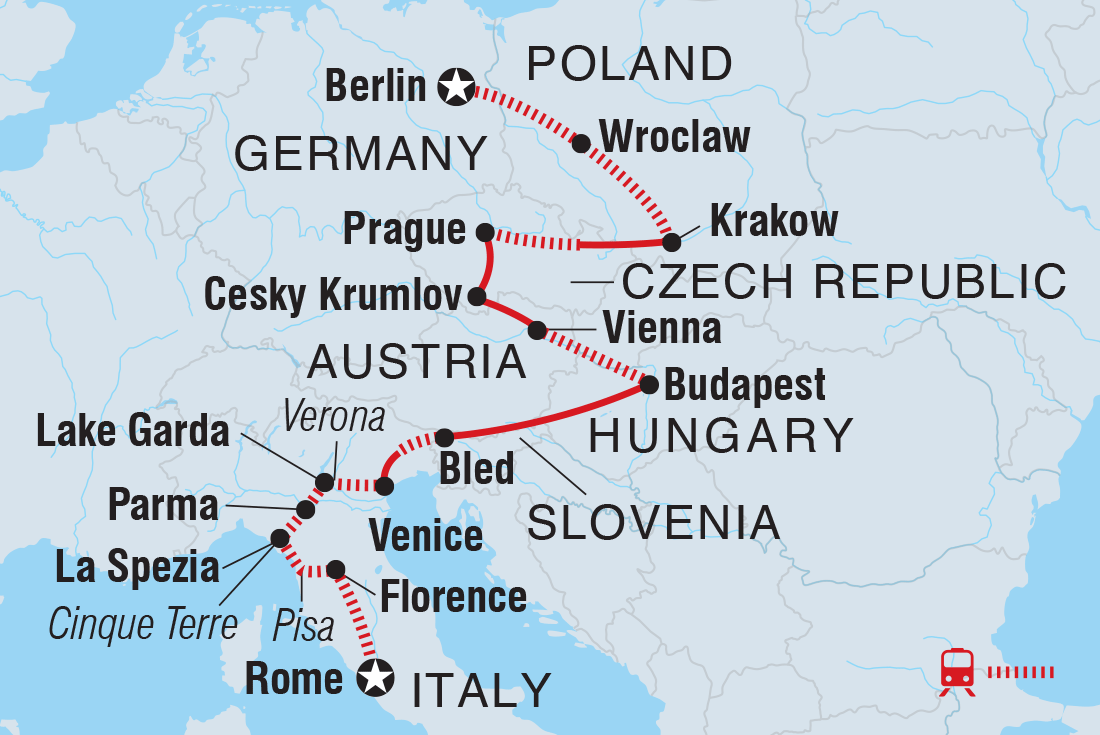


Guten Tag! Welcome to Germany. Your adventure kicks off with a welcome meeting at 6 pm tonight in Berlin. If you arrive in Berlin early, maybe explore the city on foot – Berlin is packed with historic sites, cutting-edge galleries and iconic architecture. The city also boasts a party scene that makes NYC’s nightlife seem tame. If you’re keen to see what Berlin is about, it’s highly recommended that you arrive a couple of days early. Why not get to know your new travel crew tonight and head out for currywurst (hot dogs covered in ketchup, Worcester sauce and curry powder) and a stein.
This morning, say goodbye to Germany and travel to Wroclaw – the cultural centre of southwest Poland sitting on the banks of River Oder. You’ll arrive in the early afternoon. Settle into your hotel, then follow your leader on an orientation walk around the city that makes it feel as though you’ve stepped back in time. The rest of the day is free for you to explore how you wish. Maybe check out Ostrów Tumski (Cathedral Island), the Old Town Square and the Four Denominations District, where the city’s incredible architecture and history are on display. Or appreciate Wroclaw from River Oder and picnic with a few of your new travel buddies.
This morning, board a train to Krakow – your base for the next two nights. As you stroll the streets of the UNESCO World Heritage-listed Old Town, glimpse the medieval architecture, castles, churches and sprawling squares with your leader. Grab some zapiekanka along the way (a baguette topped with mushroom and cheese) – a beloved street snack. Later, strike out on your own and maybe visit Wawel Royal Castle, which sits atop a hill next to the Vistula River or glimpse the impressive St Mary's Basilica and its extraordinary wood-carved Gothic altarpiece. If churches are your thing, the neo-Gothic St Francis' Basilica is worth a visit.
Today is a free day for you to explore Krakow. Walking the ‘Royal Route’ – the former path of Polish monarchs – takes you past most of the Old Town’s greatest treasures, including Florianska Gate and the Barbican. Tonight, visit a traditional bar mleczny (milk bar) for dinner. Polish Milk Bars, which were popular in World War II, are local canteens where you can get a home-cooked meal. Offering a glimpse into authentic Polish life, having dinner here means no English menus, sharing tables when its busy and soaking up the local atmosphere. There are very few tourists who think to visit a milk bar, unless they know a local!
This morning after breakfast, head to the Czech Republic. Take a bus to the town of Ostrava, then board the train to Prague. After checking into your hotel, your leader will show you some of Prague’s best sites on an orientation walk. Then you’re free to explore on your own. Maybe wander the streets of the Jewish Quarter and check out the oldest surviving synagogue in Europe or learn about Prague’s favourite son at the Franz Kafka Museum. Make sure to take a scenic stroll along the Charles Bridge and watch the Astronomical Clock in action as it ticks over. This is a gorgeous city, so exploring on foot is often people’s go-to activity.
Today you can enjoy more free time in Prague to visit the sites you missed yesterday. Prague Castle has a great viewpoint that provides sweeping views of the city’s red rooftops and medieval architecture. Consider a day trip to Kutna Hora, where you can visit Sedlec Ossuary – an eerie chapel decorated with human skeletons – or St Barbara Church and its medieval frescoes. Prague’s Old Town becomes particularly magical at night. Return for an evening stroll to soak up the atmosphere before checking out some of the town’s cosy cellar hangouts or underground Absinthe bars. If you’re into jazz, Prague also boasts one of the best scenes in Europe! Ask your leader for suggestions if you’re not sure where to head out tonight.
Bid farewell to Prague today and travel south to the fairytale-like town of Cesky Krumlov. Dating back to the 13th century, this tiny town closely resembles Prague with its gorgeous castle across the river and pretty mix of Renaissance and Baroque architecture. Head out on a leader-led walk around town, as they provide insight into the architectural symbolism and Old Town mysteries. After, use some free time to head to the top of the Castle Tower for a great view of the town’s red rooftops and distant rolling green hills, explore the castle and its gardens or browse the shops that line the riverfront. If you’re feeling active, ask your leader about rafting and canoeing activities on offer (time and weather permitting).
Hop into your private transfer and travel across the border to Austria and the Baroque city of Vienna. A perennial favourite for the world’s most liveable city, Vienna is also a dream for starry-eyed travellers looking for delicious coffee and pastries (sachertorte in particular), classical music and grand palaces. Get acquainted with the city on a leader-led walk and then enjoy some free time to explore on your own. Art lovers have their pick of museums to explore – maybe check out modern Austrian art at the Leopold Museum, paintings by Monet, Degas and Picasso at the neo-classical Albertina or the world’s largest collection of paintings by Austrian painter Gustav Klimt at Belvedere Palace. This evening, why not sample Vienna’s incredible musical heritage and catch a performance at one of the city’s historic venues such as the Vienna State Opera House.
Spend another day exploring Vienna’s rich artistic and intellectual heritage. Maybe head to Schloss Belvedere (Belvedere Palace), Schoenbrunn Palace or the Hofburg Palace complex to discover Austria’s symmetrical take on over-the-top grandeur. Exploring some of the city’s more specific museums such as the Schnapps Museum, the Sigmund Freud Museum or the Globe Museum, which is located inside the impressive Austrian National Museum. Climb the tower of St Stephen’s Cathedral, take a spin on the Prater Ferris Wheel or catch a dressage show at the Spanish Riding School. If you didn’t head out last night, maybe cap off a culture-filled day with a spot of Mozart Bach or Schubert at the opera house.
This morning you’ll continue your exploration of Europe’s opulent past in Budapest. Take a train and watch the scenery pass you by – when you arrive, your leader will show you around the city on an orientation walk where you can sample a Hungarian specialty - langos (fried dough). More than just a fairy-tale-like ode to the past, Budapest is also a bustling city with hip bars, trendy cafes and plenty of cheap eats. Your evening is free and your leader will make sure that you're equipped with all the insider knowledge when it comes to which are the best (and best-kept secret) ruin bars. A night out here might just be your highlight of the trip!
Enjoy a free day to explore Budapest further today. Visible from pretty much everywhere in the city, the 13th-century Buda Castle is a must-see. Why not imagine how Hungarian kings used to live by touring the palace complex, which houses the Hungarian National Gallery and the Budapest History Museum. Or you could head to Fisherman’s Bastion for the best view of the city before taking a leisurely stroll along the cobbled streets of the Castle District. Another option is a boat trip along the Danube River, where you’ll get a different view of the Parliament buildings, the Castle District and the bridges that link Buda and Pest. Tonight, find one of the many great dinner spots or head back to the ruin bars for a night out.
Get ready for a long day of travel today as you make the journey to Ljubljana. From there, you’ll travel to Bled – a scenic lakeside town tucked at the foothills of the Julian Alps. Arrive in the late afternoon and head to the iconic lake. Here, your leader will point out the town’s best attractions, like its 11th-century clifftop castle and the small island in the lake’s centre. Use the rest of the day to search for Bled’s famous cream cake (which shouldn’t be hard, every cafe in town claims to make the best one) or choose to join the group for an optional dinner of Slovenian specialties.
Postcard-perfect Bled (the perfect spot if you need a new banging Instagram) is also tailor-made for adventure, and as today is a free day, it’s up to you how you’d like to get active (or chill out and stare at the scenery – it never gets old). Hiking, biking, canoeing and rafting are all on the cards so you can choose to hire a bike and explore the surrounds, head to Vintgar Gorge for a walk through its natural canyon or go rafting along the Soca River. If you’d like to keep it more lowkey, head to Bled Castle for some exploration or take a pletna (small wooden boat) to the church on the island in the middle of the lake to ring the wishing bell. You could even venture further afield and take a day trip to Bohinj – another lakeside town.
This morning, travel to Venice – brace yourself for some amazing scenery on the way. Venice is one of a kind, built over a hundred small islands connected by 400 bridges. As well as all those romantic canals, it has all the hallmarks of a fine old Italian city – world-class food, performance, art and architecture. Use your free time to explore – the best way to go is on foot. Try to take in all the famous sights, like the Grand Canal, the shops of the Rialto Bridge, the Palace of the Doge (ruler of Venice), the Piazza San Marco and its golden basilica, and the Bridge of Sighs. Don't even think about leaving until you've eaten some tiramisu! This is where the dish was born, and they know how to do it just right.
Today is free to explore Venice at your own pace until your next welcome meeting at 6 pm to meet the new members joining you. Until then, maybe window shop by the Ponte di Rialto, browse the famous flooding bookshop – Libreria Acqua Alta (the self-proclaimed ‘most beautiful bookshop in the world’) – or jump in a gondola and be swept away by the romance of it all. Tonight, why not get together for dinner at Orient Experience – this restaurant provides employment, support and advocacy to Venice’s migrant and refugee community with a menu inspired by their journeys to get to Europe.
Say farewell to Venice this morning as you leave the canals behind and make your way to Verona – the city that played backdrop to the most famous love story ever told. An orientation walk with your leader will take you around the city and into the courtyard where you can gaze up at Juliet’s balcony (keep an eye out for Romeo lurking around the place). You’ll also go past Arena di Verona – a Roman amphitheatre that still plays host to live performances. Built in AD30 the theatre is one of the best-preserved ancient structures of its kind and is even older than the Colosseum! See if you can find some Sfogliatine di Villafranca (a much-loved crumbly puff pastry dessert invented in Verona). After an afternoon of exploring, jump back on the train and head to Lake Garda. Tonight, find a lakeside restaurant for dinner with your new travel buddies.
Wake up today in the lakeside region of Lake Garda. On the banks of the largest lake in Italy, you’ll have free time to explore at your leisure. As one of the most beautiful small towns on the lake, Peschiera del Garda packs a punch, with plenty to see. Wander along the canals and rivers and make your way down to the lakefront where you can take a dip in the turquoise waters or grab some lunch at one of the many restaurants. At the UNESCO World Heritage Site Peschiera del Garda fortress, you can learn how the Republic of Venice defended itself between the 16th and 17th centuries. Tonight, why not grab your group and watch the sunset over the water while sipping on an Aperol spritz or a negroni (or two!).
Leaving the banks of Lake Garda this morning, you’ll make your way to the beautiful city of Parma. As a food lovers paradise, get ready to sample all the traditional delicacies Parma has on offer. When you arrive, your leader will take you around the city on an orientation walk, before leaving you to explore at your own pace. Wander the colourful streets of this gem in the heart of northern Italy, famously the birthplace of Prosciutto di Parma and Parmigiano Reggiano. Once you’ve eaten all the cured hams and aged cheeses you can handle (although can you ever really get enough?), maybe check out some incredible art history and the intricately frescoed ceilings in the Duomo di Parma, or head about an hour out and visit the largest labyrinth in the world – Labirinto di Franco Maria Ricci.
Today, you’ll head to La Spezia, the gateway to Cinque Terre, nestled in the hills of northern Italy and on the coast of the Mediterranean Sea. Today is the perfect opportunity to enjoy a day at the beach, soak up some sun and eat all the seafood you can stomach. You can also jump on the bus and take a day trip out to the unofficial ‘sixth town’ of Cinque Terre, Portovenere. On the tip of a peninsula, this small finishing town is surrounded by ocean. Full of history, maybe walk out to the 12th century Doira Castle or find literary inspiration at the Grotta di Lord Byron – a popular swimming cove that inspired the author it’s named after. Today is all about enjoying the Mediterranean coast, so make it your own! Don’t forget to check in with your leader to find the best places that only the locals know.
Welcome to Cinque Terre! One of the most beautiful coastal stretches in Italy. Historically, long walking trails were the only way to travel between the villages, which means that other than the incredible views, you’ll also have some hiking opportunities. Today, your leader will take you on a hike through some of these tracks, with the Mediterranean Sea in sight the whole time. Walking past terraced farms and through coastal forests, this is the perfect way to discover this part of Italy. After your hike, the rest of the day is yours. Maybe make your way down to a beach club and soak in the sun, or join a traditional pesto making demonstration for some tricks you can take home. Alternatively, hop on a boat and take a cruise around the coast to see the rolling hills from a different perspective.
Say arrivederci to Cinque Terre this morning and make your way to Pisa. When you arrive, head over to the Piazza del Duomo where you’ll find the Battistero di San Giovanni, Cattedrale di Pisa and of course the Leaning Tower of Pisa. Join the crowds and get your very own picture holding up the tower or challenge your group to come up with the most original photo. You’ve got free time for the next few hours, so why not ask your leader for the best places to sample some salami, a few cheeses or where to get the best glass of Tuscan wine? Maybe try some Cecina Toscana (traditional flatbread) too. Leave Pisa mid-afternoon, and head for Florence, where your leader will take you on an orientation walk around the city. Ask them to point out any hot spots for dinner and drinks tonight, and where you can jump on an optional food tour or experience happy hour the Italian way (second aperitivo, anyone?).
Today you have a full day to explore one of the most beautiful cities in Italy – Florence. Home to the great Michelangelo, why not visit the Accademia Gallery and see David himself, or visit his replica and other Rennaissance sculptures in the Piazza della Signoria. If you’re feeling up for a bit of a challenge, walk the 463 steps to the top of the Duomo and get one of the best 360 views of Florence. Hunt through the streets and see how many wine windows you can find (there are over 180!), taking full advantage of the quirky little holes in the wall that were originally put in so Florentines could still enjoy a glass of vino during times of plague. Tonight, come together as a group and enjoy a sunset aperitivo in Piazzale Michelangelo before heading out for the night.
Your time in Firenze has come to an end. Today, you’ll be heading to the illustrious capital city – Rome. Walking in the footsteps of emperors, conquerors, gladiators and philosophers, the streets of Rome are steeped in history. Follow your leader on an orientation walk and get the lay of the land before heading off to explore. The Roman Colosseum (one of the Seven Wonders of the World) is a must-see for most, whether you admire the architectural marvel from the outside or immerse yourself in the history from the inside. If you’re looking for more ancient Roman architecture, check out the Forum (now home to a colony of cats). You can also talk to your leader about heading out to Vatican City where you can climb St Peter’s Dome or visit the Vatican Museum and check out Michelangelo’s Sistine Chapel. Tonight, your leader can help you find the best place for dinner to toast to the end of your adventure.
Your trip comes to an end this morning and it’s time to say goodbye to your group. As there is so much to see in Rome, it’s recommended that you stay a little longer and book a few more days – just speak to your booking agent.

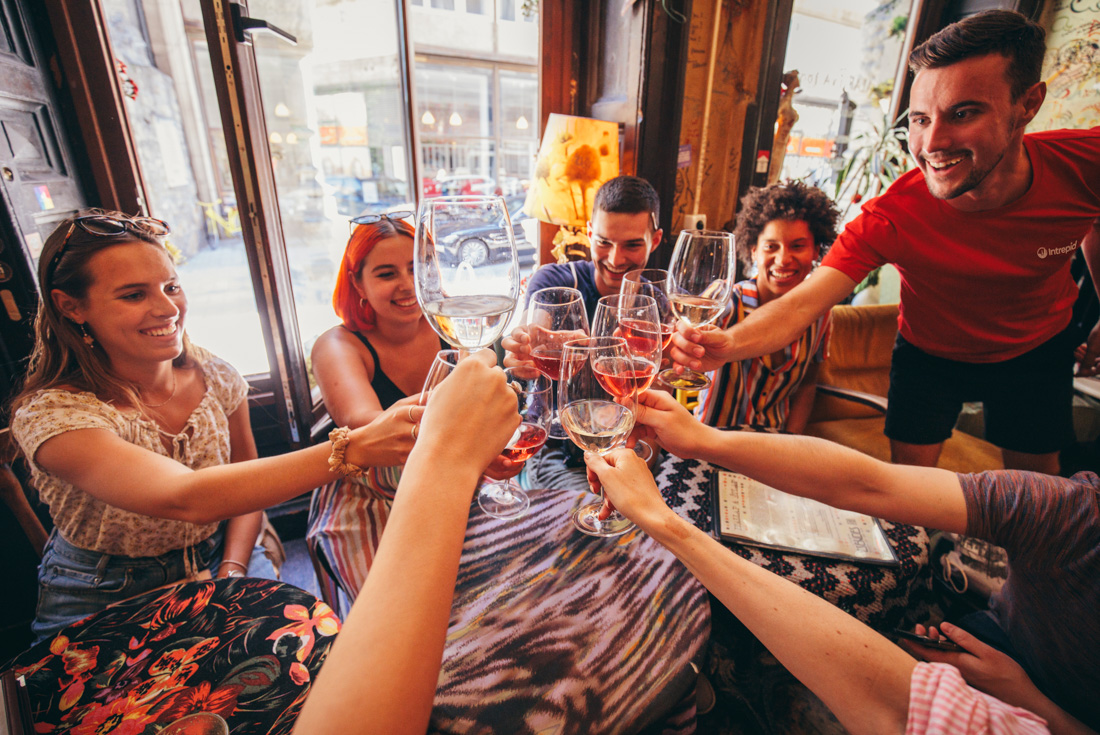
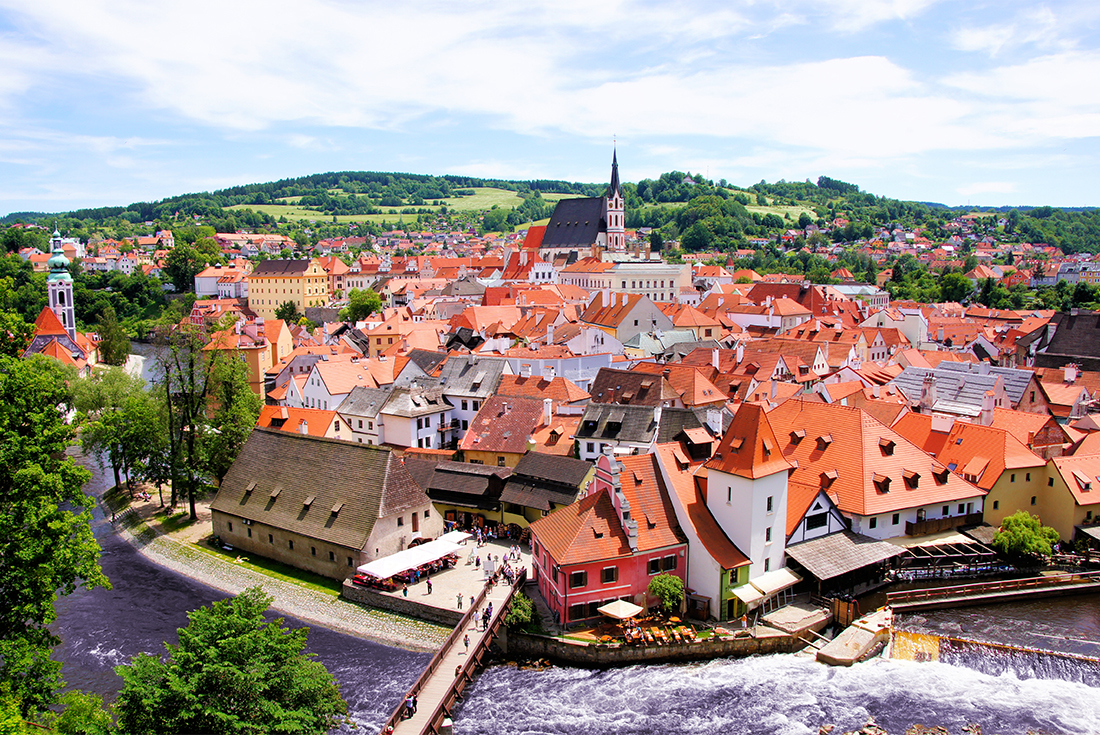
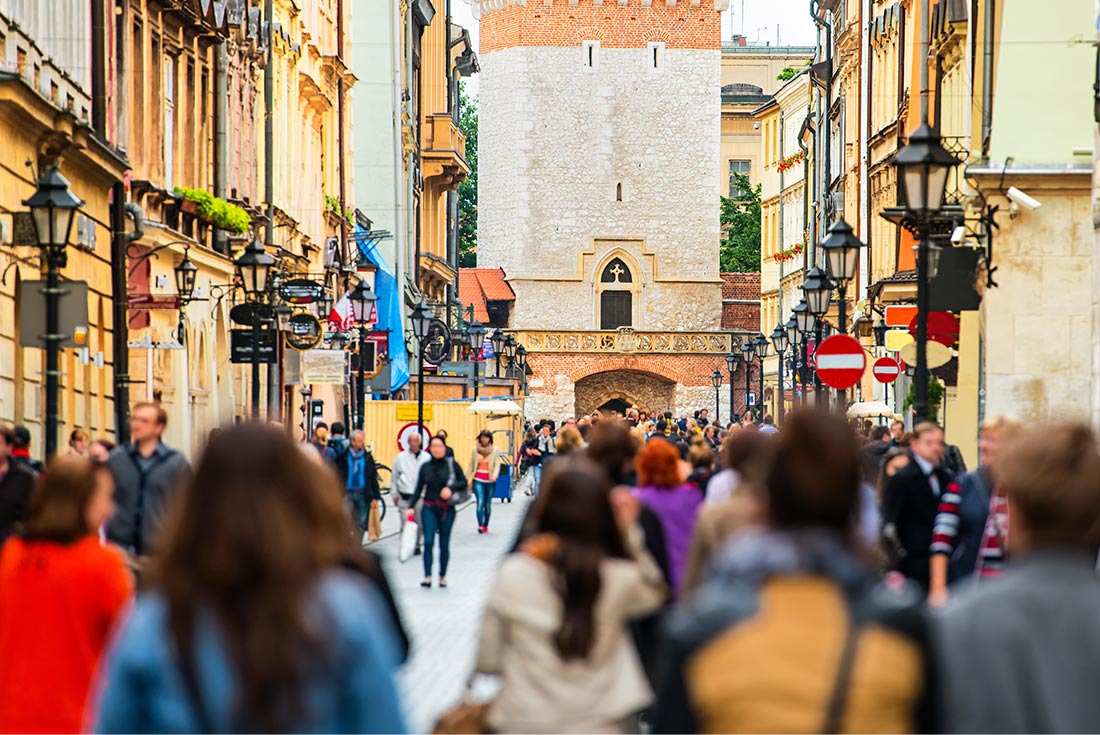
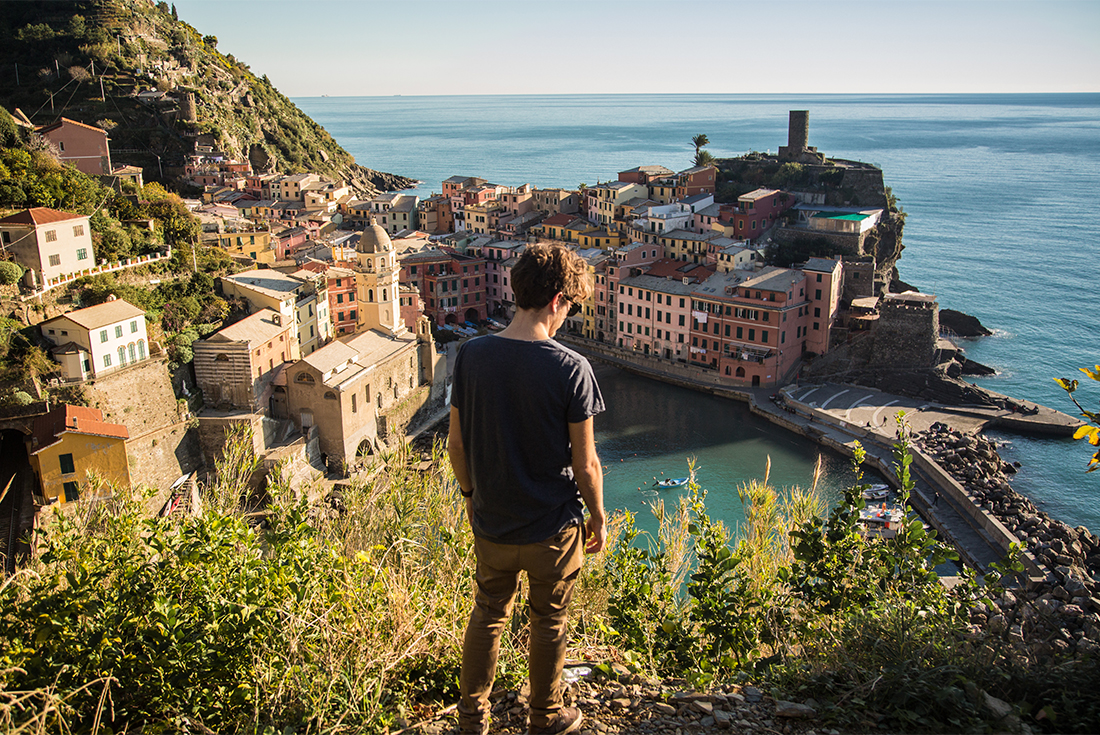
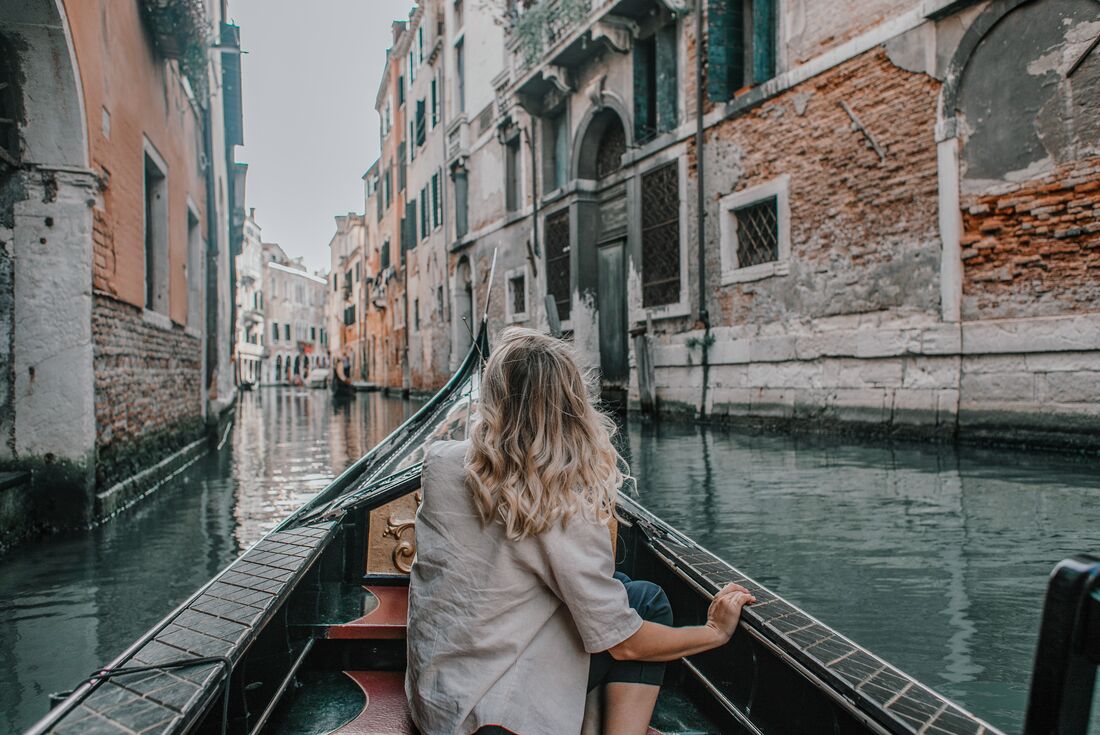

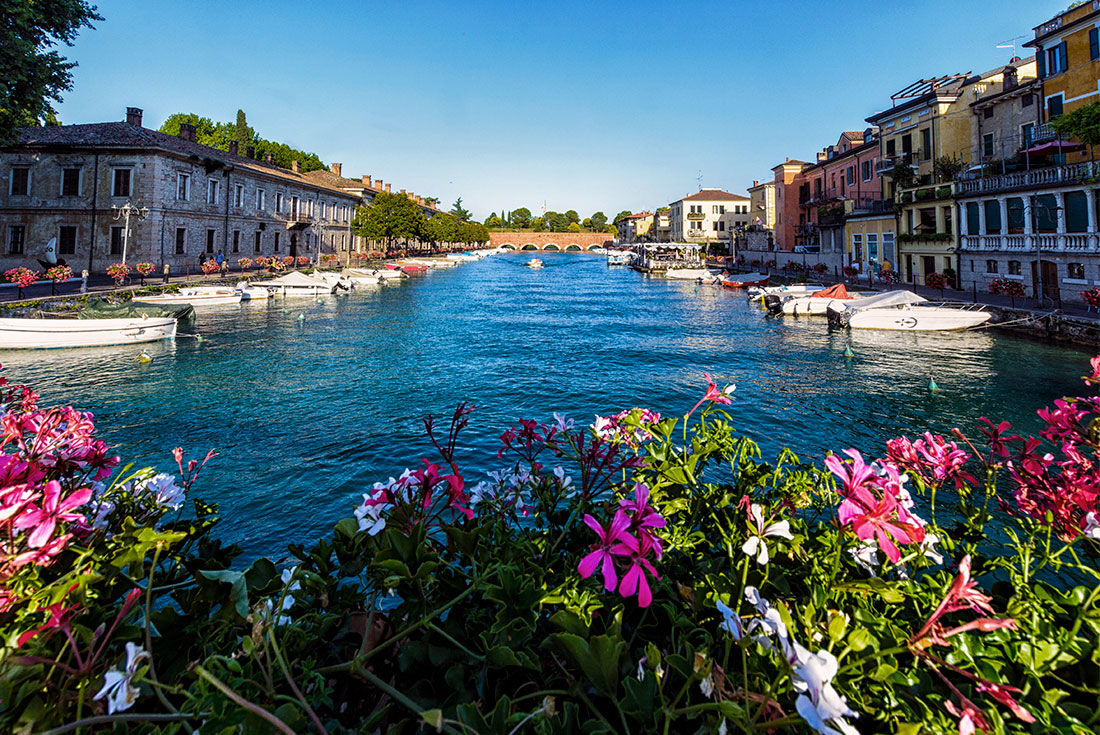
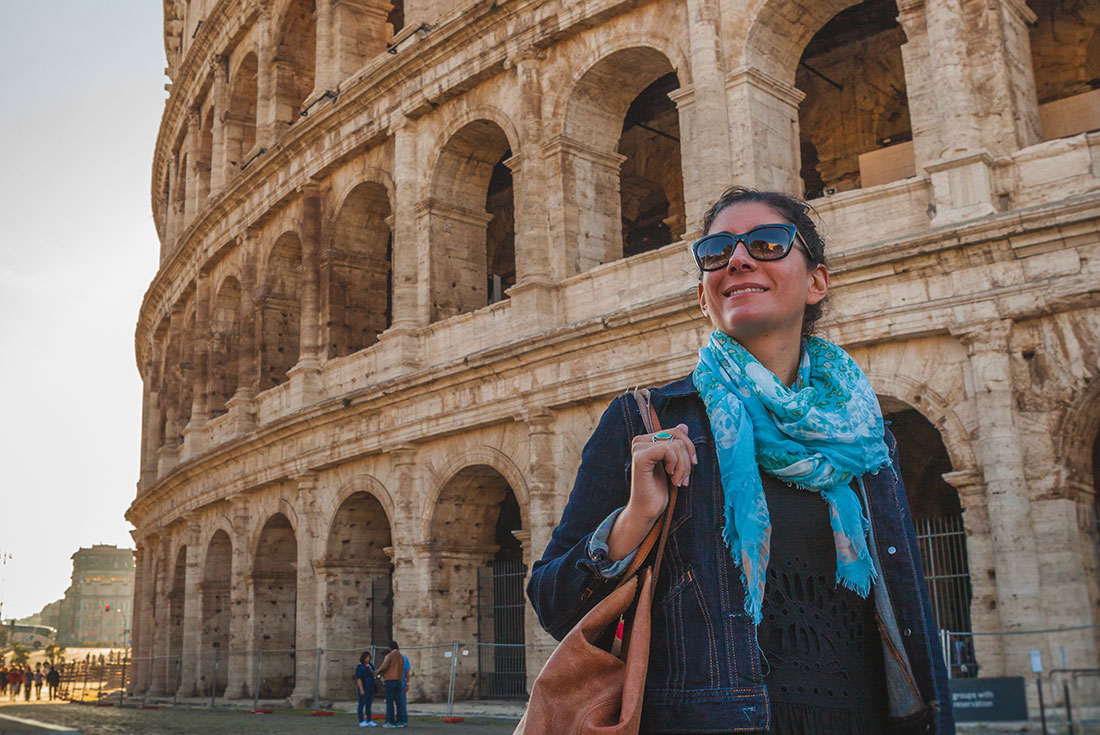
Krakow - Zapiekanka Snack
Krakow - Bar Mleczny
Budapest – Ruin Bar Visit
Budapest - Langos Snack
Verona - Orientation walk & Juliet's Balcony
Peschiera del Garda – Orientation walk
Parma – Orientation Walk
Cinque Terre – Leader-led Hike
Cinque Terre – Day Pass
Pisa - Half Day Trip
Florence – Orientation Walk
Florence - Sunset Aperitivo in Piazzale Michelangelo
Rome - Orientation Walk
Step into the pages of a fable on the shore of Slovenia’s Lake Bled – home to the bluest waters you might ever see. Explore the church on the island, walk around the lake surrounded by mountains and treat yourself to a slice of cream cake.
Hike or train between the colourful towns of Cinque Terre – walk one of the trails with your leader, alongside gorgeous views of the Mediterranean Sea, then explore at your own pace, maybe hanging out at one of the many scenic beaches or hiking through the hills.
Discover the magical Cesky Krumlov – you'd be forgiven for thinking you were in a fairytale, as this place is filled with medieval buildings, lush countryside and the flowing Vltava River
Sip an aperitivo at sunset in Piazzale Michelangelo, overlooking Florence as night falls – after a full free day to explore the art and culture (and wine) of this amazing city, this might just be your new favourite place!
Eat your way through Europe with a local leader who knows all the best spots. Enjoy langos in Budapest, try Zapiekanka in Krakow, have dinner at a classic Polish milk bar and find delicious street food in Italy and Prague.
ibis Berlin Kurfuerstendamm, Bayreuther Strasse 39 10787 BERLIN Germany , Berlin, GERMANY, Phone: +49 302888670
Albergo Nord Nuova Roma, Via Giovanni Amendola 3 , Rome, 00185, ITALY, Phone: +39 06 4885441
1. Pre and post tour accommodation and transfers are available to book upon request, subject to availability. Please contact your booking agent for more details.
2. A single supplement is not available on this trip.
While we always endeavour to provide the best possible holiday experience, due to the nature of travel and the areas we visit sometimes things can and do go wrong. Should any issue occur while you are on your trip, it is imperative that you discuss this with your group leader or local representative straight away so that they can do their best to rectify the problem and save any potential negative impact on the rest of your trip.
We recognise that there may be times when your group leader or local representative may not be able to resolve a situation to your satisfaction - if this is the case, please ask the group leader or local representative to speak to their direct manager.
You may also choose to provide details in your online feedback, which we ask you to complete within 30 days of the end of your trip. Please do be aware that it is very difficult for us to provide any practical help after the trip is completed, so informing us while still travelling will give us the opportunity to resolve the issue in real-time., For general contact details please use the following page: https://www.intrepidtravel.com/contact-us, If you have booked an arrival transfer, and you experience severe delays at immigration, baggage collection or customs, or if you are not able to find to the driver, please contact the transfer operator directly on the number listed in the joining point instructions in the section above., In the case of a genuine crisis or emergency, Intrepid's Europe Operations Team can be reached on the number listed below:, Intrepid's Local Operator: +49 8024 4679 540, Intrepid's Local Operator: +34 960 25 61 55
The best way to experience a city is by doing as the locals do – that means using public transport such as trams, trains, buses and metro at some locations. You’ll get an authentic look at daily life but be aware you may find yourself sharing a busy bus ride with local commuters. The trains used on this trip are comfortable, and all have toilets but can also be very busy., Europe is steeped in history, which means sometimes the infrastructure is old. Often there are no lifts or escalators, particularly in some train stations or hotels. The cobblestone streets, narrow steps and tiny bridges of Europe are very romantic but they’re also a good reason to pack light and leave the wheeling suitcase at home. You may have to carry your bags up and down stairs, as well as some short distances to the hotel. Make sure it doesn’t exceed our weight and size recommendations – check the 'Packing' section of the Essential Trip Information., Summer temperatures can be very high in many of the regions visited (over 40°C), which can be uncomfortable. It’s important to use sun protection, wear layers to combat the heat, and drink plenty of water. Please keep in mind that many European hotel rooms are not equipped with air-conditioning. In Winter, warm waterproof layers will be needed as snow and rain can be expected. Carefully consider the time of the year you wish to travel and your suitability to that season., As some accommodation on this trip is twin or multishare, solo travellers will share a room with other travellers of the same gender, an excellent opportunity to get to know other like-minded people. For those travelling as a pair, European hotels often don't have double beds, but rather two single beds that can be pushed together.
Step into the pages of a fable on the shore of Slovenia’s Lake Bled – home to the bluest waters you might ever see. Explore the church on the island, walk around the lake surrounded by mountains and treat yourself to a slice of cream cake., Hike or train between the colourful towns of Cinque Terre – walk one of the trails with your leader, alongside gorgeous views of the Mediterranean Sea, then explore at your own pace, maybe hanging out at one of the many scenic beaches or hiking through the hills., Discover the magical Cesky Krumlov – you'd be forgiven for thinking you were in a fairytale, as this place is filled with medieval buildings, lush countryside and the flowing Vltava River, Sip an aperitivo at sunset in Piazzale Michelangelo, overlooking Florence as night falls – after a full free day to explore the art and culture (and wine) of this amazing city, this might just be your new favourite place!, Eat your way through Europe with a local leader who knows all the best spots. Enjoy langos in Budapest, try Zapiekanka in Krakow, have dinner at a classic Polish milk bar and find delicious street food in Italy and Prague.
All Intrepid group trips in Europe are accompanied by one of our local European group leaders. ’Local’ in this context means a leader who is European or lives in Europe. The aim of the group leader is to take the hassle out of your travels and to help you have the best trip possible. Intrepid endeavours to provide the services of an experienced leader however, due to the seasonality of travel, rare situations may arise where your leader is new to a particular region or training other group leaders. Your leader takes care of logistics, will provide information on the places you are travelling through, offer suggestions for things to do and see, recommend great local eating venues and introduce you to our local friends. While not being guides in the traditional sense you can expect them to have a broad general knowledge of the places visited on the trip, including historical, cultural, religious and social aspects.
At Intrepid we also aim to support local guides in the individual cities or locations we travel to. If you are interested in delving deeper into the local culture at a specific site or location then your leader can recommend an optional local guide service in most of the main destinations of your trip.
TRAVEL ADVISORIES & ALERTS
We recommend that you check your government's foreign travel advisory for the latest information about the destination before you travel. You will also need to ensure that your travel insurance covers you for all destinations and activities on your trip. We also recommend saving the phone number for emergency consular assistance for your government’s consulate in the destination/s you’ll be travelling. Links to travel advisories and any current travel alerts for our trips can be found here: https://www.intrepidtravel.com/travel-alerts
PERSONAL SAFETY
Ensure you have a secure method of carrying your passport, phone, credit cards and cash while travelling such as a money belt. Leave all other high value items, including jewellery, at home Use safety deposit boxes at hotels to store your valuables when available and ensure your luggage is lockable. Be aware of the risk of pick-pocketing and petty theft. Exercise caution when walking at night, don’t walk alone and stick to well-lit streets wherever possible. Be vigilant on public transport and look out for your fellow travellers. Take precautions such as carrying your bag in front of you and never leaving personal items unattended.
LGBTQIA+ TRAVELLERS
Intrepid welcomes all LGBTQIA+ customers on our trips, however we operate in parts of the world that are less accepting. We support LGBTQIA+ customers to travel to these destinations and are committed to ensuring they face no discrimination on any part of the trip we control. We recommend you visit Equaldex (https://www.equaldex.com/) and your government's foreign travel advice for LGBTQIA+ travellers when choosing your trip., https://www.intrepidtravel.com/safety-guidelines, VENICE GONDOLAS
Please note, life jackets are not provided on Gondolas in Venice., PETTY THEFT AND PERSONAL SAFETY
While travelling there is always the risk of pick-pocketing and petty theft, particularly in the more touristy cities. We recommend that you exercise caution when walking alone at night and encourage you to walk together and only on main, well-lit thoroughfares. Be particularly vigilant on public transport. Simple measures like carrying your day pack on your front, not hanging your bag over the back of your chair or on the floor and wearing a money belt will reduce any chance that your valuables should go missing.
PASSPORT
You’ll need a valid passport to travel internationally and most countries require your passport to have a minimum of 6 months validity, so remember to check the expiry date.
We need your passport information to get everything ready for your trip so it’s important that the information on your booking matches your passport exactly. Please take care to provide the correct details. We recommend carrying a copy of the photo page of your passport while travelling and leaving a copy at home with family or friends.
VISAS & ENTRY REQUIREMENTS
Many countries require a visa and obtaining the correct visa for your trip and any countries you may transit through is your responsibility. We recommend you check your visa requirements as soon as you have booked your trip. This will ensure you have time to prepare your documents and for your visa application to be processed. You can check the entry requirements for your nationality on your government's foreign travel advisories, consular websites or on our page here: www.intrepidtravel.com/visa-entry-requirements
Information not available.
Validity: 01 Jan 2026 to 31 Dec 2026
GENERAL HEALTH
All travellers need to be in good physical health in order to participate fully on this trip. For the safety and wellbeing of yourself and others, if you are unwell prior to travelling, please stay at home and contact us to make alternative arrangements.
When selecting your trip please make sure you have read through the itinerary carefully and assess your ability to manage and enjoy our style of travel. Please note that if in the assessment of our group leader or local representative a traveller is unable to complete the itinerary without undue risk to themselves and/or the rest of the group, we reserve the right to exclude them from all or part of a trip without refund.
You should consult your doctor for up-to-date medical travel information or for any necessary vaccinations before departure. We recommend that you carry a first aid kit as well as any personal medical requirements in their original packaging as they may not easily be obtained while travelling. If you are carrying medication, ensure you check your government's foreign travel advice for any local restrictions or requirements.
While travelling with us you'll experience the vast array of wonderful food available in the world. Your group leader or local representative will be able to suggest restaurants to try during your trip. To give you the maximum flexibility in deciding where, what and with whom to eat, generally not all meals are included in the trip price. This also gives you more budgeting flexibility. As a rule, our groups tend to eat together to enable you to taste a larger variety of dishes and enjoy each other's company. If you have dietary requirements and/or food allergies, please let your booking agent know prior to departure., VEGETARIANS
Vegetarians might find the menu selection in Europe less varied than they would see at home. Vegetarianism is not as common in this region and generally the choices are basic, involving vegetables, soups, salads, bread, cheese, fruit, yoghurt, eggs etc. Vegans and those on gluten-free diets may find this region very challenging and may need to supplement meals with their own supplies from supermarkets and markets. Wherever possible we will cater for dietary needs for any included meals, but there may be times when those with special requirements may need to provide their own., BREAKFASTS
There are some continental breakfasts included on this trip which may simply include bread/toast or pastries, butter, jam, coffee/tea/juice (or similar).
SPENDING MONEY
When it comes to spending money on the trip, every traveller is a little different. You know your spending habits better than we do, so please budget an appropriate amount for things like optional meals, drinks, shopping, optional activities, and laundry. Make sure you have read the itinerary and inclusions thoroughly so you know what is included in the trip price and what you may need to pay for while travelling. , EUROPE
The Euro (EUR) is the official currency in the following destinations: Andorra, Austria, Belgium, Croatia, Cyprus, Estonia, Finland, France, Germany, Greece, Ireland, Italy, Kosovo, Latvia, Lithuania, Luxembourg, Malta, Montenegro, the Netherlands, Portugal, Slovakia, Slovenia, Spain. All other European countries still have their own national currencies.
You can use your credit/debit card in ATMs, which are common throughout Europe. You can obtain EUR cash prior to arriving through normal outlets such as banks and currency exchange offices., Below are any additional currencies used in countries visited on this itinerary., The local currency in Poland is the Polish Zloty (PLN)., The local currency in the Czech Republic is the Koruna (CZK)., The local currency in Hungary is the Hungarian Forint (HUF), TIPPING
Tipping can be an appropriate way to recognise great service when travelling. While it may not be customary in your home country, it is an entrenched feature of the tourism industry across many of our destinations and is greatly appreciated by the people who take care of you during your travels. It is always best to avoid tipping with coins, very small denomination notes, or dirty and ripped notes, as this can be regarded as an insult rather than the goodwill gesture it is intended to be., We recommend budgeting approximately EUR 10-20 per person per week to tip local service providers for activities included in this trip, in local currencies. This doesn’t include a tip for your leader., YOUR GROUP LEADER OR LOCAL REPRESENTATIVE
Tipping your group leader or local representative is highly appreciated if you feel they’ve provided outstanding services throughout your trip. The amount is entirely a personal preference; however, as a guideline, the recommended amount is 4-7 USD or EUR per traveller per day (in a currency relevant to your destination). Of course, you are free to tip more or less as you see fit, depending on your perception of service quality and the length and involvement of your group leader or local representative on your trip., CONTINGENCY FUNDS
We try to plan for every eventuality, but there are still some things beyond our control. We reserve the right to change an itinerary after departure due to local circumstances or a Force Majeure Event. In such emergency circumstances, the additional cost of any necessary itinerary alterations will be covered by you. Please note we are not responsible for any incidental expenses that may be incurred as a result of the change of itineraries including but not limited to visas, vaccinations or non-refundable flights. Make sure you have access to an extra US$500 for emergencies (e.g. severe weather, natural disasters, civil unrest) or other events that result in unavoidable changes to the itinerary (e.g. transport strikes or cancellations, airport closures). Sometimes these things necessitate last-minute changes to enable our trips to continue to run, and as a result, there may be some extra costs involved. The recommended amount is listed in USD for the relatability of universal travellers, however, local currency may be needed once in the country to cover these costs.
Most travellers prefer to take a small to medium wheeled suitcase, which is a great size for the packing capacity in our private vehicles. Whatever you take, be mindful that you will need to be able to carry your own luggage, handle it at airports, take it in/out of accommodation and perhaps even walk short distances. We recommend you pack as lightly as possible.
If your trip includes travelling on overnight trains or primarily using public transport, the smaller your luggage, the easier it will be to store under or above bunks. Large suitcases may not be able to be taken on board. A lockable bag or small padlock for your bag will be useful, especially when travelling on public transportation as well.
When you're exploring during the day, you'll also need a day pack/bag to carry water, a camera, a jacket and activity-specific items like a swimsuit, a waterproof pouch/bag for your phone, or hiking shoes.
Below we have listed the essentials for this trip:, https://www.intrepidtravel.com/packing-list, WATER BOTTLE
Please bring your own water bottle to refill. Although it can be difficult to avoid bottled water when travelling, please use the water dispensers which are provided on some of our vehicles and at some of our accommodation. When unable to avoid bottled water, it is better to buy the largest available and distribute it into your smaller bottle for the day. Some travellers like to bring a bottle with its own filtration system or water purification tablets. If you are walking or trekking as part of your trip, you will need to carry at least 2 litres of water with you.
SUMMER
Summer temperatures can be extreme in many of the regions visited (over 40°C/104°F), which can be uncomfortable. It’s important to use sun protection and drink plenty of water. Please carefully consider the time of the year you wish to travel and your suitability to that season.
SHOULDER SEASON
In contrast, weather in shoulder season can be unpredictable, and snow is not unheard of at higher altitudes. If you travel at the start or towards the end of the European season please pack accordingly with warm and/or waterproof clothes (preferably layers). The advantage of travelling during this time is that there are less tourists around.
Intrepid won't tolerate any kind of violence, harassment (whether physical, verbal or sexual), or disrespect toward fellow travellers, our teams or local communities.
To ensure the wellbeing of everyone on the trip, decisions made by your group leader are final.
Romantic relationships between travellers and group leader or local representative are not permitted while on trip.
Any behaviour that prevents your leader from continuing the itinerary as planned, breaks local laws or opposes any of these guidelines may result in Intrepid denying your booking or removing you from the trip.
If something concerns you during your travels, please speak to your group leader immediately. Alternatively, you can contact us on the emergency contact number detailed in the Problems and Emergency Contact Information section of this Essential Trip Information.
We've sourced our accommodation very carefully and picked the best possible hotels in line with the Intrepid 18 to 35s style of travel. Our first accommodation choice is always as close to the main attraction of the destination as possible, however, sometimes we are not in the right centre of action, which means you may need to hop on public transport to get to the city centre. Service and accommodation in Europe may be different to the standards you are used to. Your accommodation will not always have private en suite facilities or air-conditioning and rooms can be small.
OCCASIONAL ALTERNATIVE ACCOMMODATION
The style of accommodation indicated in the day-to-day itinerary is a guideline. On rare occasions, alternative arrangements may need to be made due to the lack of availability of rooms in our usual accommodation. A similar standard of accommodation will be used in these instances.
ROOMING ALLOCATION
Accommodation on this trip is on a twin/multi-share basis. We pair up solo travellers with other travellers of the same gender as per the gender marker on each of their passports.
CHECK-IN TIME
Throughout the trip we request that our hotels prepare rooms in time for your arrival, especially if you're arriving prior to normal check-in time. However this isn't always possible which means you won't be able to check-in immediately on arrival at some hotels. Instead, you can store your luggage and go exploring.
PRE/POST TRIP ACCOMMODATION
If you've purchased pre-trip or post-trip accommodation (if available), you may be required to change rooms from your trip accommodation for these extra nights.
TRANSPORT IN EUROPE
Half the fun of travel is the travelling itself, that's why we like to travel the local way – whether that means mingling with commuters on a local train, watching the scenery roll by from the window of a long distance bus, arriving on a high speed train in the city centre of your next destination, or navigating each city's public transport system. In Europe, you are guaranteed to travel by genuine local public transport wherever possible, which puts you right in the centre of the action.
Travel insurance is compulsory on all our trips for those travelling internationally. We require that, at a minimum, you are covered for medical expenses, including emergency repatriation. If you are travelling within your home country or region, please confirm before travel that you are entitled to access the public medical system easily should an accident occur. We strongly recommend all travellers have a policy that also covers personal liability, cancellation, curtailment and loss of luggage or personal effects. For international trips, you will not be permitted to join the group until evidence of travel insurance and the insurance company's 24-hour emergency contact number has been sighted by your group leader or local representative.
If you have credit card insurance, your group leader or local representative will require details of the participating insurer/underwriter, the level of coverage, policy number, and emergency contact number, rather than the bank's name and your credit card details. Please contact your bank for these details prior to arriving in-country.
For travellers who reside within the European Union, Switzerland or the USA, the requirement to purchase travel insurance cannot be compulsory. However, the purchase of travel insurance is still highly recommended, and each country you visit may have its own specific entry requirements. For example, some mandate travel health insurance for all foreign travellers, regardless of their nationality. Travellers from the European Union, Switzerland or the USA who decline travel insurance when travelling outside their home region must sign a Travel Insurance Waiver Form at the Group Meeting, recognizing personal responsibility for emergency medical and repatriation costs should they arise.
For assistance with travel insurance or other services, please visit the link below:
, https://www.intrepidtravel.com/booking-resources/our-services
As you travel on a group trip you will be exposed to all the pleasures and maybe some of the frustrations of travelling in a group. Your fellow travellers will probably come from all corners of the world and likely a range of age groups too. We ask you to be understanding of the various needs and preferences of your group - patience with your fellow travellers is sometimes required for the benefit of everyone's travel experience. Remember too that you have responsibilities to the group. If you are requested to be at a place at a certain time, ensure that you don't keep the rest of the group waiting. We have found time and time again that the very best trips we operate are those where the dynamics within the group work well - this takes just a little effort on your part. Due to privacy reasons, we are unable to provide you with contact details and any personal information about your fellow travellers booked on your trip prior to departure., SINGLE TRAVELLERS
Our group trips are designed for shared accommodation and don't involve a compulsory single supplement. Single travellers share with people of the same gender in accommodation ranging from twin to multishare. Some of our itineraries have accommodation booked on a mixed gender share basis and where applicable this will be specified in our Trip Notes. This only applies to accommodation during the tour - pre-trip and post-trip accommodation will be booked on a single room basis. Please note that no single supplement is available for this trip, however should a single room become available at the time of check in, there may be the option for you to upgrade to a single room and pay the surcharge locally for that night.
ITINERARY CHANGES
Our itineraries are updated regularly throughout the year based on customer feedback and to reflect the current situation in each destination. The information included in this Essential Trip Information may therefore differ from when you first booked your trip. It's important that you review this information prior to travel so that you have the latest updates. Due to weather, local conditions, transport schedules, public holidays, political unrest or other factors, further changes may be necessary to your itinerary once in-country. Your group leader or local representative will keep you up to date with any such changes once your trip is underway and has the authority to amend or cancel any part of the trip itinerary if deemed necessary due to safety concerns.
, OPTIONAL ACTIVITIES
A selection of optional activities that have been popular with past travellers are listed in the day-to-day itinerary. This isn't an exhaustive list and should be used as a guide only for some of what might be available. Prices are approximate, are for entrance fees only, and don’t include transport to and from the sites or local guides unless indicated. All activities are subject to availability, and maybe on a join-in basis. It may not be possible to do all the activities listed in the time available at each destination, so some pre-planning for what you are most interested in is advised. When it's recommended that travellers pre-book these activities, look for a note in the Special Information section of the day-to-day itinerary. For most, they can either be organised independently on the day, or let your group leader or local representative know you are interested at the Welcome Meeting and they can assist.
Where activities are considered medium or high risk, we work with operators whose safety and credentials we have sighted and assessed. Although it is possible that you may find the same activity cheaper with another operator on the ground, we cannot vouch for the safety or quality of that operator. Medium and high-risk activities not listed above have not been assessed by us and as such our staff and group leader or local representative are unable to assist you with organising these activities. Activities that contravene our Responsible Travel policies are also not listed. Please remember that the decision to partake in any activity not listed is at your own discretion and risk., BOOKING MUSEUMS AND ATTRACTIONS IN ADVANCE:
To avoid disappointment we have outlined (where applicable) some important information on some of the major museums and attractions in Europe. Some of our groups have experienced long lines of up to four hours to visit some of the major sights, while some sights are so popular they are booked out completely months in advance, making it impossible for you or your leader to arrange a visit while you are on the trip. Please note that many museums and attractions in Europe are closed on Mondays or Tuesdays. We recommend you carefully consider which sites and museums you are going to want to visit and that you do some research and make your reservations in advance where possible. If applicable we've given you information in the day-to-day itinerary which outlines which day of the trip is a suitable time to make your reservations, as well as any other information that may help with planning your visit.